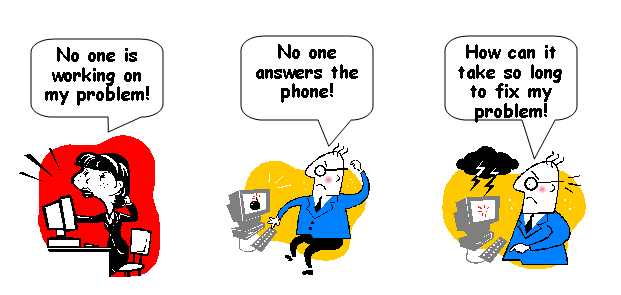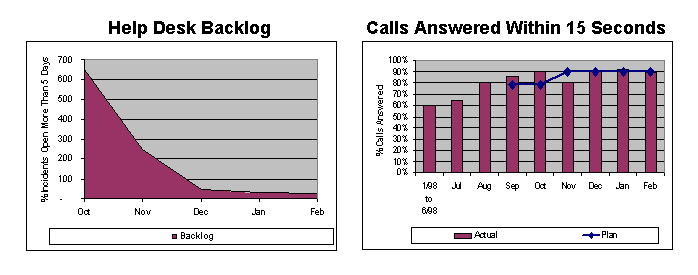 |
|
| What We Do | What We Have Done |
Case Studies | Why LimNorris? | Company Info | FAQ | Contact Us |
Client: Distributed Systems Service (DSS) - Reading, PA
The Scenario: DSS runs internal Information Technology (IT) help desks at various client sites to handle employee hardware and software problems, including the installation of new desktop systems. At one location, the help desk was being bombarded with negative customer feedback, charging that it was both unresponsive and ineffective. Some of the most common complaints included "no one is working on my problem," "no one answered the phone when I called," and "new systems are never installed correctly."

The Challenge: Overcoming confusion and frustration caused by lack of standards
Initial analysis revealed that much of the help desk's perceived failure stemmed from a lack of clearly defined roles and responsibilities for both DSS help desk personnel and internal IT staff.
The Approach: Establish structure, process and metrics to ensure satisfaction and accountability
- Define and articulate to appropriate personnel exactly what issues are within the domain of the DSS help desk and, more importantly, what activities are not. People had been calling the help desk for everything.
- Implement a tracking system to log how many calls are coming into the help desk and how quickly they are processed.
- Work with internal company team to develop a clear method for prioritizing incoming help desk calls.
- Consult internal company team to determine what constitutes a successful help desk interaction, including how quickly a request should be handled.
The Result: Clear and measurable across-the-board improvement.
- After three months, help desk backlog dropped from 653 unresolved calls to only 26.
- After three months, 100 percent of Priority I problems were resolved within four hours.
- After six months, 90 percent of help desk calls during peak time were answered within 15 seconds. (Up from less than 60 percent.)
- Within six months, the number of desktop installations requiring follow-up work by help desk personnel and/or internal IT staff dropped from 21 percent to 2 percent.

|
Copyright 2002 Lim, Norris & Associates, Inc. All rights reserved.
|
|||||||||||||||||